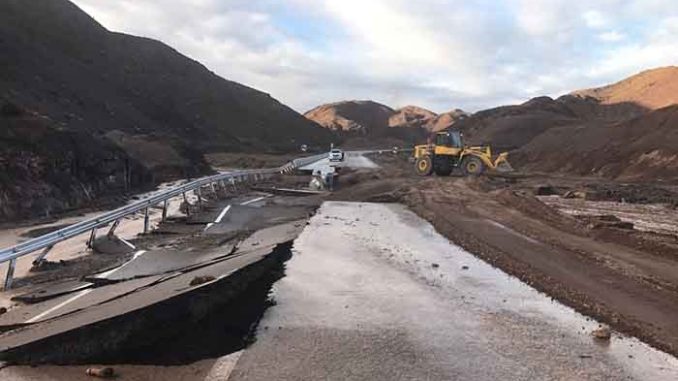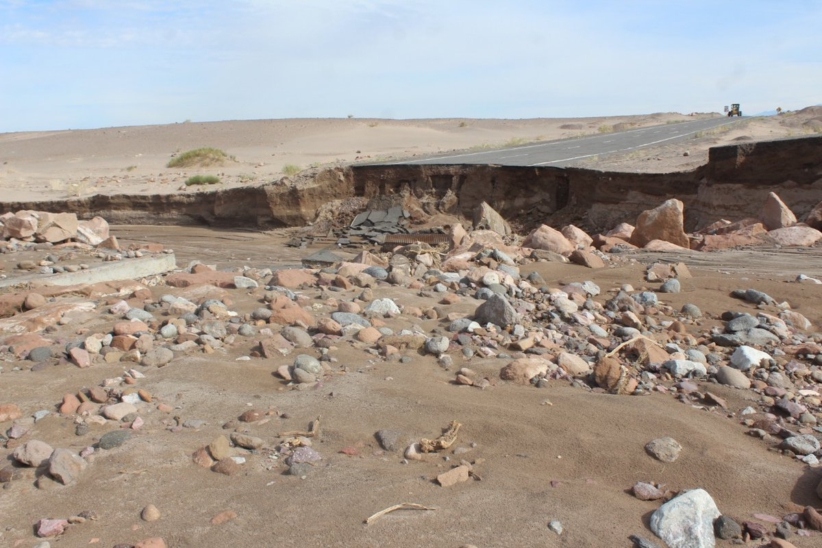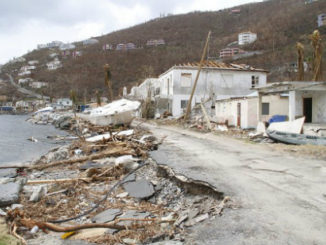
SANTIAGO – President Sebastián Piñera has declared a part of northern Chile as “catastrophe zone” following heavy rains, which have caused six deaths, serious damage to road infrastructure, housing and also in agriculture.
“I have decreed disaster zone in Loa province due to damage caused by abnormal rainfall of the Bolivian winter. We toured affected areas and we will have meeting with Emergency Operational Committee to work Reconstruction and recovery plan Q will be presented tomorrow,” Piñera said Friday after visiting the city of Calama, one of the most affected by the floods.
He decretado Zona de Catástrofe en Provincia del Loa debido a daños ocasionados x lluvias anormales x Invierno Boliviano. Recorrimos zonas afectadas y tendremos reunión con Comité Operativo de Emergencia para trabajar plan de reconstrucción y recuperación q será presentado mañana pic.twitter.com/xGb1eMXBvZ
— Sebastian Piñera (@sebastianpinera) February 8, 2019
The president suspended his vacation in southern Chile to travel north, where he will remain until next Sunday.
According to the Constitution, once the state of catastrophe or state of emergency has been declared, the respective zones are immediately under the control of the Armed Forces, which can restrict the freedoms of locomotion and assembly and establish limitations on the exercise of the right of ownership, between others, with the restoration of normalcy in the affected area.

Piñera, who expressed the “most heartfelt solidarity” with the families of the people who died in the area as a result of the heavy rains, announced that this Saturday a “diagnosis and cadastre” of the damages occurred in the area will be carried out.
Expreso mis más sentidas condolencias y solidaridad a las familias de personas q perdieron sus vidas y también a los daminificados por esta situación. Estamos trabajando para q la recuperación se haga con máxima urgencia para q El Loa y las victimas puedan normalizar sus vidas.
— Sebastian Piñera (@sebastianpinera) February 8, 2019
“Both in terms of connectivity, bridges, roads, in terms of drinking water supply, in terms of destruction of homes and also in terms of damage to agriculture,” he added.
Piñera added that “we hope that the reconstruction and assistance will be very immediate, because we understand that the victims urgently need and need them.”
So far, according to the National Emergency Office (Onemi), the floods have caused 6 deaths in those regions, 99 houses destroyed, 142 have suffered major damage and another 123 have minor damage, and many victims, of which 144 are in hostels.

Several villages remain isolated and several roads are cut by landslides and rocks, including Route 5 North, the country’s main longitudinal route, while rivers that are dry most of the year in those regions have been overflowed.
¡Más de 10 mil litros de agua para la campaña #TodosConLaRegion!, con un camión aljibe que ya está en #Calama. El grupo Amsa realizó este nuevo aporte a la cruzada liderada por el intendente M.A. Díaz. ¡Todos a ayudar! #Antofagasta @GOREAntofagasta #ChileLoHacemosTodos pic.twitter.com/4Bv1VC6awW
— MDS Antofagasta (@Dsocial_II) February 7, 2019
In addition to road cuts, in Calama, 37,174 customers remain affected due to the cut off of drinking water supplies. The water utility Aguas Antofagasta makes alternate cuts every 12 hours that affect 50% of the city of Calama, until conditions in high mountain range improve; since the floods, drag sediments, mud and rocks, hinder the production of water with optimal levels of potabilization.
Gobierno desplegado en zonas afectadas por emergencias. Ministros(s) Ubilla (@Min_Interior), @ehantelmann (@Segegob), @LucasPalaciosC (@mop_chile), Riesco (@MMAChile), Vargas (@MinagriCL) y De La Maza (@mindefchile), en Aysén, La Araucanía, Arica y Antofagasta. #GobiernoEnTerreno
— Segegob (@segegob) February 8, 2019
Onemi indicated that the red alert applies to the Arica and Parinacota region and to the provinces of Tamarugal, in Tarapacá, and of El Loa and the Antofagasta commune in Antofagasta.
The Army has reinforced the number of men who are working in northern Chile, after the floods and floods caused by the so-called altiplanic winter (from Bolivia), which means that the storms that are generated in the height of the Bolivian highlands affect also to the plains of the Atacama Desert.
Integrantes de las unidades fundamentales de emergencia pertenecientes a la Brigada Motorizada N°1 "Calama" habilitan canaletas para proteger a la comunidad de #Camar de las precipitaciones en la #Emergencia #LOA pic.twitter.com/KFX9BzSS4Y
— Ejército de Chile (@Ejercito_Chile) February 8, 2019
Until February 9 (Saturday), moderate to strong rainfall is expected in the foothills and mountains of the Arica and Parinacota and Tarapacá regions.



